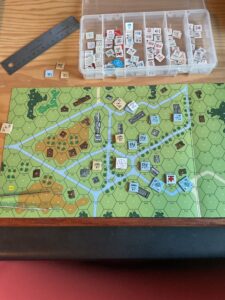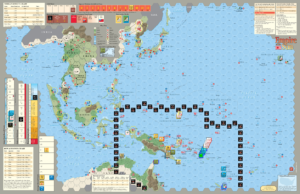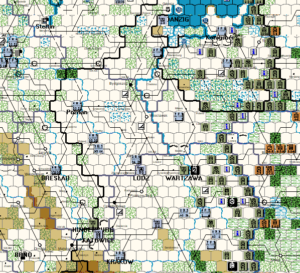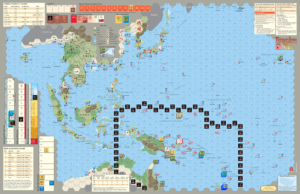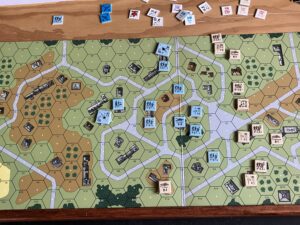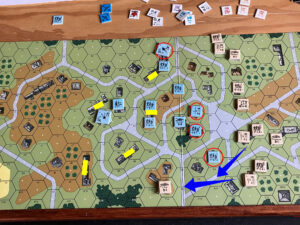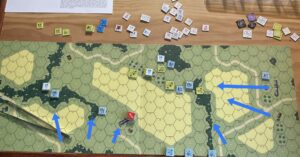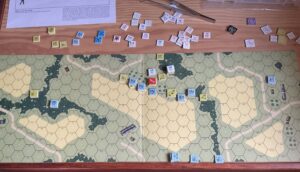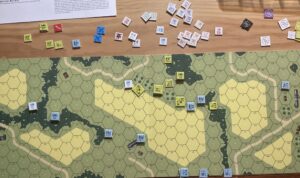Finally summoned up the courage to play a scenario with armor. Getting into ASLSK Starter Kit #3 was one of my goals for my Fall/Winter gaming.
As always, Jay Richardson’s tutorials are a tremendous resource.
“Monty’s Gamble” (ASL Scenario S23) is a good place to start. It’s a one-half mapper with British paratroopers, supported by two (2) 57mm anti-tank guns, trying to stop three (3) German assault guns and troops from advancing through Oosterbeek towards the end of the fighting around Arnhem. It’s manageable in terms of size and with a length of only four and one-half turns. The German objective is to exit a mix of vehicles and squads off the boardm moving from East to West.
The action became intense during Turn 2. An assault gun eliminated the crew of one of the British guns and was, in turn, ambushed by a para squad in an adjacent building. It was an excellent opportunity to muddle my way through the Close Combat sequence involving vehicles.
I think I got it right. The British rolled badly and, as a result, were eliminated by the assault gun. If not exactly correct, I was close and achieved what I believe was the intent of the sequence. Good enough for me on a first try.
Here’s shot of the game at the start (German) of Turn 3. North is to the top of the frame. In the South, the lead assault gun is standing-off at maximum PIAT range in attempt to destroy the squad blocking their advance. So far, two shots have failed to effect the British (squad and PIAT now under the -2 Acquired counter).
The second assault gun – with infantry – may attempt to flank the British position, or advance West in an attempt to get off the board. That will involve dealing with the second British anti-tank gun positioned in the woods half-hex on the extreme West edge of the battlefield.
